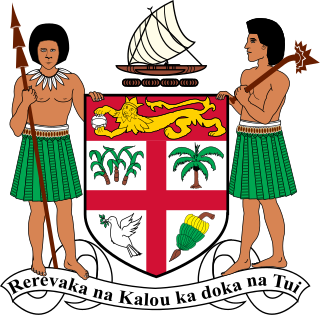
Fiji has held 10 general elections for the House of Representatives since becoming independent of the United Kingdom in 1970; there had been numerous elections under colonial rule, but only one with universal suffrage. In this period, Fiji has had three constitutions, and the voting system has changed accordingly. Note that there are no general elections for the Senate: The 32 Senators are nominated, not elected.

Elections in Kenya take place within the framework of a multi-party democracy and a presidential system. The President, Senate and National Assembly are directly elected by voters, with elections organised by the Independent Electoral and Boundaries Commission (IEBC).

The Punjab Legislative Assembly or the Punjab Vidhan Sabha is the unicameral legislature of the state of Punjab in India. At present, it consists of 117 members, directly elected from 117 single-seat constituencies. The tenure of the Legislative Assembly is five years unless dissolved sooner. The current Speaker of the Assembly is Rana KP Singh. The meeting place of the Legislative Assembly since 6 March 1961 is the Vidhan Bhavan in Chandigarh. The current ruling party is the Indian National Congress with 2/3rd Majority.

The West Bengal Legislative Assembly is the unicameral legislature of the Indian state of West Bengal. It is Located in the B. B. D. Bagh area of Kolkata (Calcutta)-the Capital of the state. Members of the Legislative assembly are directly elected by the people. The legislative assembly comprises 295 Members of Legislative Assembly, which include 294 members directly elected from single-seat constituencies and one nominated from the Anglo-Indian community. Its term is five years, unless sooner dissolved.

The Tamil Nadu Legislative Assembly alone has powers to legislate laws covering state subjects in the Indian state of Tamil Nadu. It has a strength of 235 members of whom 234 are democratically elected using the First-past-the-post system. The remaining member is nominated as a representative of the Anglo-Indian community. The presiding officer of the Assembly is called the Speaker. The term of the Assembly is five years unless it is dissolved earlier.

General elections were held in East Africa Protectorate in March and April 1920, the first elections in the country. The Legislative Council had previously consisted entirely of appointed members. The new Council consisted of 11 elected white members, two appointed members representing the Indian population and one appointed member representing the Arab population, as well as a number of appointees by the Governor. This allowed the Council representative, although not responsible government. The territory became Kenya Colony on 23 July.

General elections were held in Kenya Colony on 2 April 1924. The elections were the first under a new Constitution which saw suffrage extended to Indians and Arabs, who were allotted five and one elected seat in the Legislative Council respectively, alongside the eleven elected seats for the white population, although appointed members were still the majority. Whilst all adult Indian residents were given the right to vote, in the Arab community only men literate in Arabic or Swahili and resident in the country for two years were enfranchised, as the community had requested that women not be given the right to vote. One member was appointed to represent the majority black population.

General elections were held in Kenya Colony on 12 February 1927.

General elections were held in Kenya Colony in 1934, with the first seats elected on 28 March. Four candidates were returned unopposed in the eleven Europeans constituencies, whilst the remaining seven constituencies were contested by 18 candidates. For the five Indian seats, there were 17 candidates. Voter turnout in the White seats was the highest since elections were introduced. The Council convened for the first time after the election on 24 April.

General elections were held in Kenya Colony between 26 March and 2 April 1938. Three of the eleven white seats in the Legislative Council were uncontested, whilst all Indian seats were contested, and saw more businessmen were elected than politicians. Lady Sidney Farrar became the country's first female Legislative Council member after defeating Conway Harvey in the Nyanza constituency by two votes.

General elections were held in Kenya in 1952.

General elections were held for the first time in Nyasaland on 15 March 1956.

General elections were held in Kenya in May 1948.

Located in Lucknow, the Vidhan Bhavan is the seat of the bicameral legislature of the Indian state of Uttar Pradesh. The lower house is the Vidhan Sabha and the upper house is called the Vidhan Parishad or the. The Vidhan Sabha had 431 members until 1967, but now comprises 403 directly elected members and one nominated member from the Anglo-Indian community. The Vidhan Parishad has 100 members.

The Kenya Indian Congress (KIC) was a political party in Kenya.

The Kenya Freedom Party was a political party in Kenya.
The Devonshire White Paper was a document written in 1923 by the colonial secretary Victor Cavendish, 9th Duke of Devonshire, regarding the status of settlers and natives in the Kenya Colony. The paper stated that whenever the interests of the native Africans clashed with those of Asian, European, or Arab settlers, those of the Africans should prevail. Although the Paper had little effect on the welfare of native Africans, it nonetheless set a precedent for future conflict resolution between the various groups living in the colony.

General elections were held in Fiji in 1929. They were the first in which Indo-Fijians were allowed to vote.








